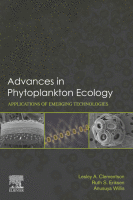Browse content
Table of contents
Actions for selected chapters
- Full text access
- Book chapterNo access
Index
Pages 563-585
About the book
Description
Phytoplankton ecology has developed from an understanding of taxonomy, species dynamics and functional roles, and species interactions with the surrounding environment. New and emerging technologies enable a paradigm shift in the ways we monitor and understand phytoplankton in a range of environments. Advances in Phytoplankton Ecology: Applications of Emerging Technologies is a practical guide to these new technologies and explores their application with case studies to show how recent advances have changed our understanding of phytoplankton ecology.
Part one of this book explores how traditional taxonomy and species identification has changed, moving from morphological to molecular techniques. Part two explores the new technologies for remote and automatic monitoring and sensor technology and applications for management. Part three explores the explosion of omics techniques and their application in species identification, functional populations, trait characterization, interspecific interactions, and interaction with their environment.
This book is an invaluable guide for marine and freshwater ecology researchers to how new technologies can enhance our understanding of ecology.
Phytoplankton ecology has developed from an understanding of taxonomy, species dynamics and functional roles, and species interactions with the surrounding environment. New and emerging technologies enable a paradigm shift in the ways we monitor and understand phytoplankton in a range of environments. Advances in Phytoplankton Ecology: Applications of Emerging Technologies is a practical guide to these new technologies and explores their application with case studies to show how recent advances have changed our understanding of phytoplankton ecology.
Part one of this book explores how traditional taxonomy and species identification has changed, moving from morphological to molecular techniques. Part two explores the new technologies for remote and automatic monitoring and sensor technology and applications for management. Part three explores the explosion of omics techniques and their application in species identification, functional populations, trait characterization, interspecific interactions, and interaction with their environment.
This book is an invaluable guide for marine and freshwater ecology researchers to how new technologies can enhance our understanding of ecology.
Key Features
- Combines traditional techniques with new technologies and methods
- Explores the influence of new technology on our understanding of phytoplankton ecology
- Provides practical applications of each technique through case studies in each chapter
- Combines traditional techniques with new technologies and methods
- Explores the influence of new technology on our understanding of phytoplankton ecology
- Provides practical applications of each technique through case studies in each chapter
Details
ISBN
978-0-12-822861-6
Language
English
Published
2021
Copyright
Copyright © 2022 Elsevier Inc. All rights reserved.
Imprint
Elsevier
